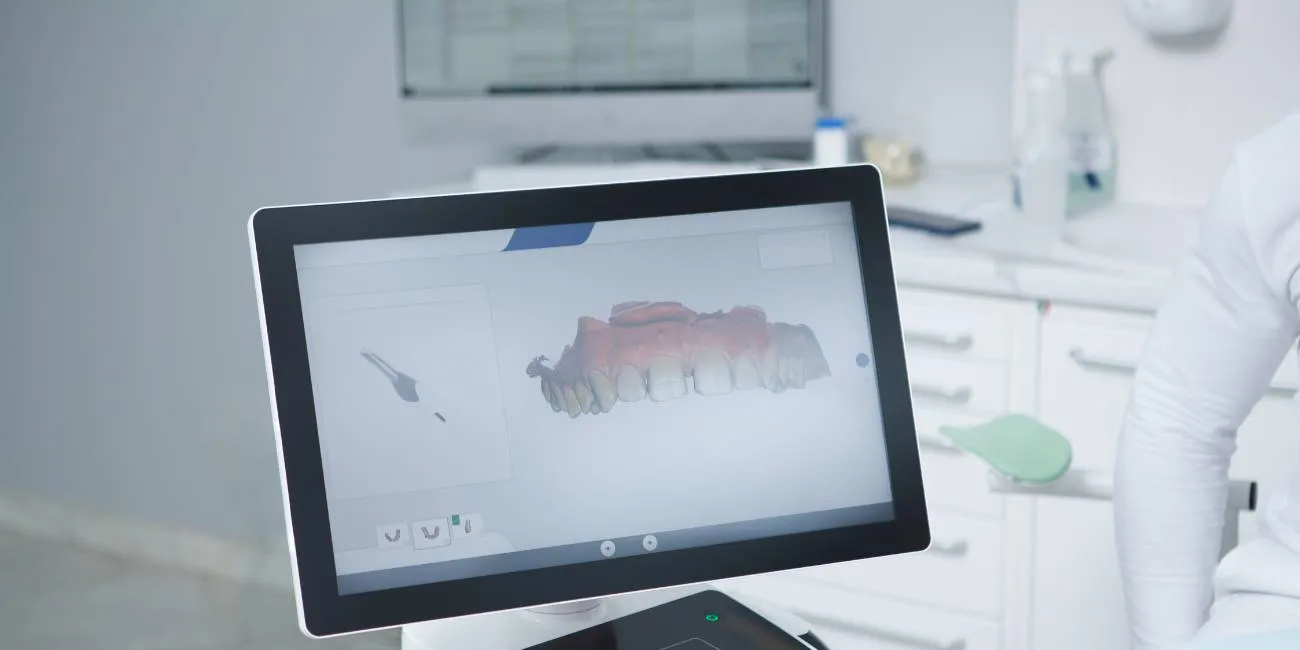

In today’s digital age, technology has revolutionized various aspects of our lives, and the field of dentistry is no exception. By enabling dentists to identify issues before they become irreparable, technology has undoubtedly played an essential role in redefining the field of dentistry. One remarkable advancement in the field of dentistry is the use of 3D scanning technology. At White Perfect Dental Surgery, a leading family-friendly dental clinic in Kuala Lumpur, we embrace the power of 3D scanning to provide our patients with exceptional dental care and treatment outcomes. In this article, we will explore the benefits and applications of 3D scanning in dentistry, highlighting its role in diagnosis, treatment planning, and patient experience.
With 3D scanning technology, the need for traditional, messy dental impressions is eliminated. Instead, a handheld scanner captures a highly detailed digital impression of the patient’s teeth and surrounding structures. This digital model provides a comprehensive and accurate representation of the oral cavity, enabling dentists to diagnose dental issues with precision.
Additionally, comprehensive treatment scheduling can also be generated from the detailed digital models from 3D scanning. This revolutionary method allows dentists to thoroughly analyze the patient’s dental condition. They can assess the alignment of teeth, identify areas of decay or damage, and plan for necessary treatments. This comprehensive treatment planning enhances the precision and effectiveness of dental procedures, ensuring optimal results for patients whilst minimizing risks.
Another exciting application of 3D scanning technology is virtual smile design. By using specialized software, dentists create digital simulations of the patient’s smile, allowing them to visualize potential outcomes of cosmetic treatments such as dental veneers or teeth whitening. This technology enables patients to actively participate in their treatment planning, ensuring that their expectations are met. An application of 3D scanning would be implant planning and aftercare. This advanced planning process aids in selecting the appropriate implant size, shape, and location, considering factors such as bone quality and available space. By simulating the implant placement digitally, dentists can anticipate potential challenges and make necessary adjustments before the actual procedure, leading to more predictable and successful outcomes.
After the implants have integrated with the jawbone, prosthetic components such as crowns, bridges, or dentures are fabricated to restore the patient’s natural smile and bite functionality. With 3D scanning, accurate digital impressions of the implant site and neighboring teeth can be obtained, ensuring a seamless fit and alignment of the restoration. This eliminates the need for traditional, uncomfortable impressions and improves the overall patient experience.
Traditional dental procedures often involve uncomfortable impressions and molds. However, with 3D scanning, patients can experience a more comfortable and pleasant dental visit. The handheld scanner used in 3D scanning is non-invasive and allows for a quicker and more efficient process, reducing discomfort and anxiety.
3D scanning technology significantly reduces the time required for dental procedures. Digital impressions are captured swiftly, eliminating the need for multiple appointments and reducing chair time. This time efficiency is particularly beneficial for patients with busy schedules or those seeking immediate results.
The visual representation of 3D digital models facilitates effective communication between dentists and patients. Dentists can use the models to explain diagnoses, treatment options, and expected outcomes in a clear and comprehensible manner. This empowers patients to make informed decisions about their dental health and actively participate in their treatment journey.
In addition to diagnosis and treatment planning, 3D scanning technology finds valuable applications in various dental procedures, namely implant placement and restoration precision. An example would be dental implants. Dental implants are a popular and effective solution for replacing missing teeth, and the success of the procedure relies on precise planning and execution. With the aid of 3D scanning, dentists can achieve unparalleled accuracy and optimize the functional and aesthetic outcomes of dental implant procedures.
Accurate and detailed digital models allow dentists to precisely plan and execute dental implant procedures. 3D scanning provides information about bone density, nerve location, and the ideal positioning of implants. This level of precision ensures successful implant placement and optimal functional and aesthetic outcomes.
Absolutely! 3D scanning is a safe and non-invasive technology used in dentistry. It involves capturing digital impressions of the teeth and oral structures, eliminating the need for traditional, uncomfortable dental impressions.
3D scanning plays a crucial role in dental implant procedures. It allows dentists to accurately assess bone density, nerve location, and the ideal placement of implants. This precision ensures successful implant integration and optimal functional and aesthetic outcomes for patients.
While 3D scanning technology may involve initial investment costs for dental clinics, it ultimately streamlines the treatment process, reducing chair time and enhancing efficiency. As a result, it can help optimize costs and improve treatment outcomes for patients.
Yes, 3D scanning is highly beneficial for orthodontic treatment planning. It enables dentists to create accurate digital models of the patient’s teeth, aiding in the planning and visualization of tooth movement. This technology enhances the precision and effectiveness of orthodontic treatments such as braces or aligners.
Absolutely! At White Perfect Dental Surgery, we believe in patient engagement and education. The digital models generated through 3D scanning can be shared with patients, allowing them to view and understand their dental condition, treatment options, and expected outcomes. This transparency empowers patients to actively participate in their dental care decisions.
The integration of 3D scanning technology into dentistry has transformed the way we diagnose, plan treatments, and deliver dental care. At White Perfect Dental Surgery, we recognize the importance of implant placement and restoration precision. By harnessing the power of 3D scanning technology, we are able to deliver exceptional implant dentistry services that prioritize accuracy, longevity, and patient satisfaction. Our team of experienced professionals utilizes advanced 3D scanning techniques to ensure precise planning, execution, and restoration of dental implants. Experience the benefits of this revolutionary technology by scheduling a consultation with our dentists today!




Fissure sealant
Dental fillings
Root canal treatment
Tooth extraction
Wisdom tooth removal
Crowns & bridges
Branches & Operating Hours
Contact Information
Make an Appointment


Fissure sealant
Dental fillings
Root canal treatment
Tooth extraction
Wisdom tooth removal
Crowns & bridges
Branches & Operating Hours
Contact Information
Make an Appointment
Copyright © White Perfect Dental Surgery Sdn Bhd (Company No. 201001012274 (1000198-P)).
Website Managed by MYSense. All Rights Reserved.